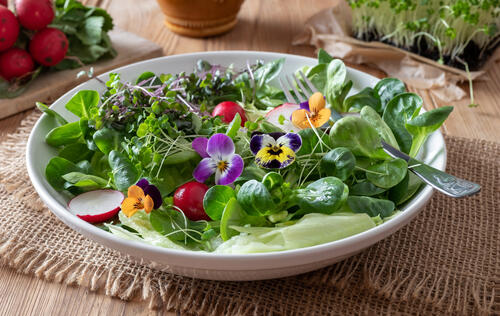Preserving berries

Summer is when you’ll find plenty of local berries at the market. Although these fruits are only grown during the warm months, you can enjoy them year-round thanks to three preservation methods: jam making, freezing and dehydration. Enjoy delicious Quebec strawberries, raspberries and blueberries year-round!
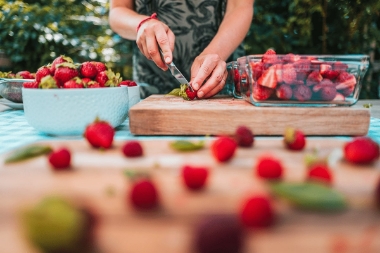
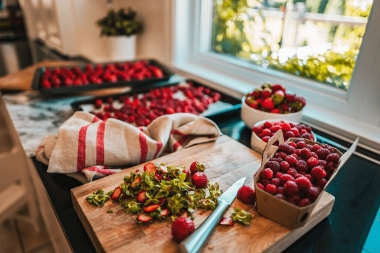
JAMS
A grandmother's classic, simmering berries fill our kitchens with an irresistible sweet aroma. Jams are made by cooking the fruit with almost as much sugar. The sugar works as a natural preservative, so jams keep a long time (as long as the jars have been properly sterilized, of course).
SKIMMING YOUR JAM
Skimming is a crucial step in jam making. It's important to remove the white foam that forms on the surface of the jam during cooking. This foam contains all the fruit's impurities. If you don't remove the foam, it could contaminate the jam, and mould could grow. The foam needs to be removed after the jam is fully cooked; removing it during cooking could also remove the pectin, the jelling agent that thickens jams.
STERILIZIN JAM JARS
For jam to keep at room temperature, you need to sterilize your jars. Here is a tried and tested method, recommended by experts in the art of preservation:
- Place your clean jars in a large pot filled with hot water. Bring to a boil and let simmer over medium heat for 5-10 minutes.
- Place new lids (rings) in hot (not boiling!) water, in order to soften the rubber that allows the jars to seal.
- Place new lids (rings) in hot (not boiling!) water, in order to soften the rubber that allows the jars to seal.
- Place a lid (ring) on each jar and gently screw on the sealing ring.
- Place the jars upright in the pot of boiling water. Ensure that they are covered by at least 2.5 cm (1 in.) of water. Cover the pot. Let sit for 10 minutes while the jam sets.
- Take the jars out of the boiling water, ensuring that they stay upright. Let cool for 24 hours without tightening the seals. Over the following hours, you should hear little "pops" indicating that the jars are sealing properly and the sterilization has been done correctly.
If you didn’t hear a "pop" from one of your jars, don't throw it away! Just eat that jam within two weeks. You could also try to freeze it instead.
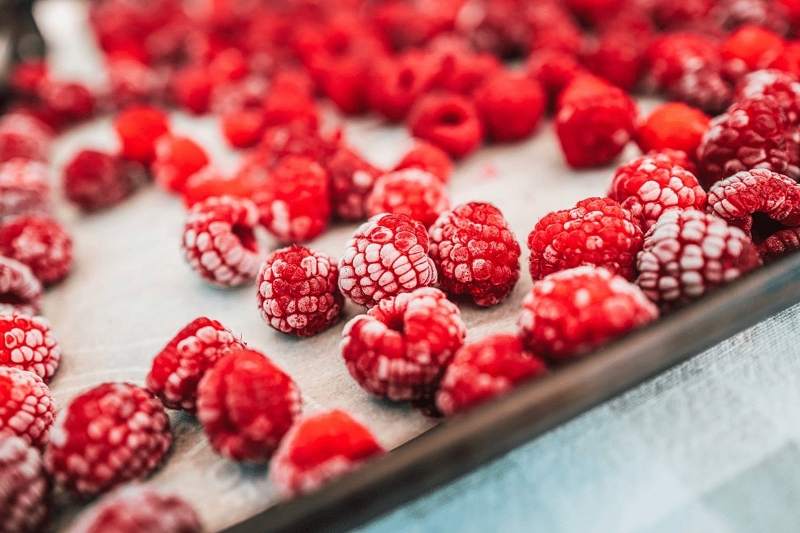
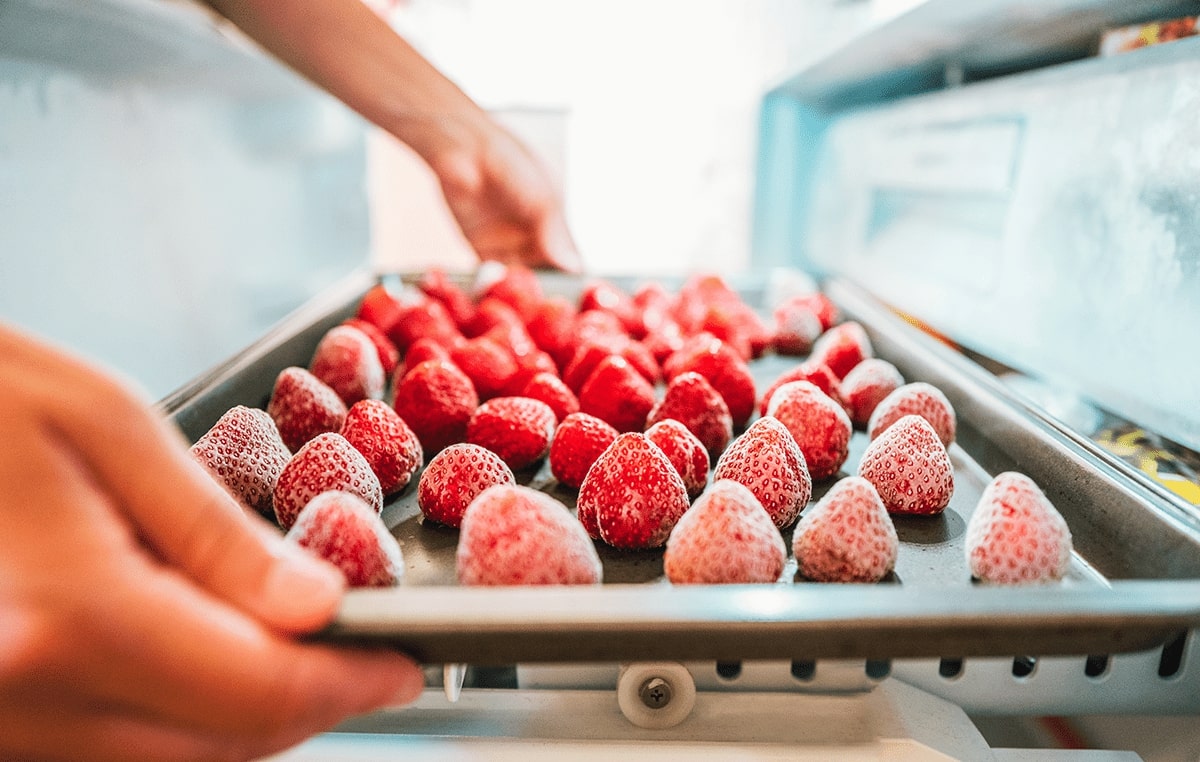
FREEZING BERRIES
Another way to preserve berries is to freeze them. Although this method is simple, there are three crucial steps to keep in mind.
- Rinse and prepare the berries. Remove the stems of strawberries. Fully dry the fruit with a clean cloth.
- Spread out the berries on a baking sheet. Put them in the freezer for several hours. This step is crucial to ensure that the berries don't clump in the freezer bag.
- Place the fruit in bags or bowls. To be more eco-friendly, avoid buying new freezer bags every year. Bags can be reused multiple times.
And there you go! Your berries are ready to be added to your morning oatmeal, smoothies or pies and crumbles all winter – whenever you’re craving a taste of summer. Berries will keep for about 6 months in the freezer.
Dehydrating berries
Are you intimidated at the prospect of dehydrating fruit? It's easier than you think! Although it’s easy with a food dehydrator from a kitchen store, it's also possible with your oven.
*To be more eco-friendly, avoid buying new freezer bags every year. Bags can be reused multiple times.
THE OVEN METHOD
- Rinse and prepare the fruit. Wipe down with a clean cloth. Remove the stems of strawberries.
- Preheat the oven to 200˚F.
- Arrange the berries in a single layer on a parchment-lined baking sheet.
- Bake for 2 hours. Check if the berries are dry. If so, stir them and bake for another hour or two. Baking time can vary based on the size of the berries.
Your berries are ready!
PRESERVING DEHYDRATED BERRIES
Dehydration removes the risk of mould and extends the shelf life of food. Properly dehydrated fruit can last up to a year if stored in the right conditions. It is crucial to keep dehydrated berries in an airtight container in a dry place.
Your berries are ready!
Last step: enjoy!
Once you’ve used these preservation methods, all that's left is to enjoy the great taste of summer even in the depths of winter. Visit the "recipes" section of our website for some suggestions.
Here are a few recipes you can try:
Strawberry and vanilla jam (in French)
Strawberry-rhubarb maple cake (in French)
Photos and article by Éliane Lepage from Fraises et Framboises du Québec.

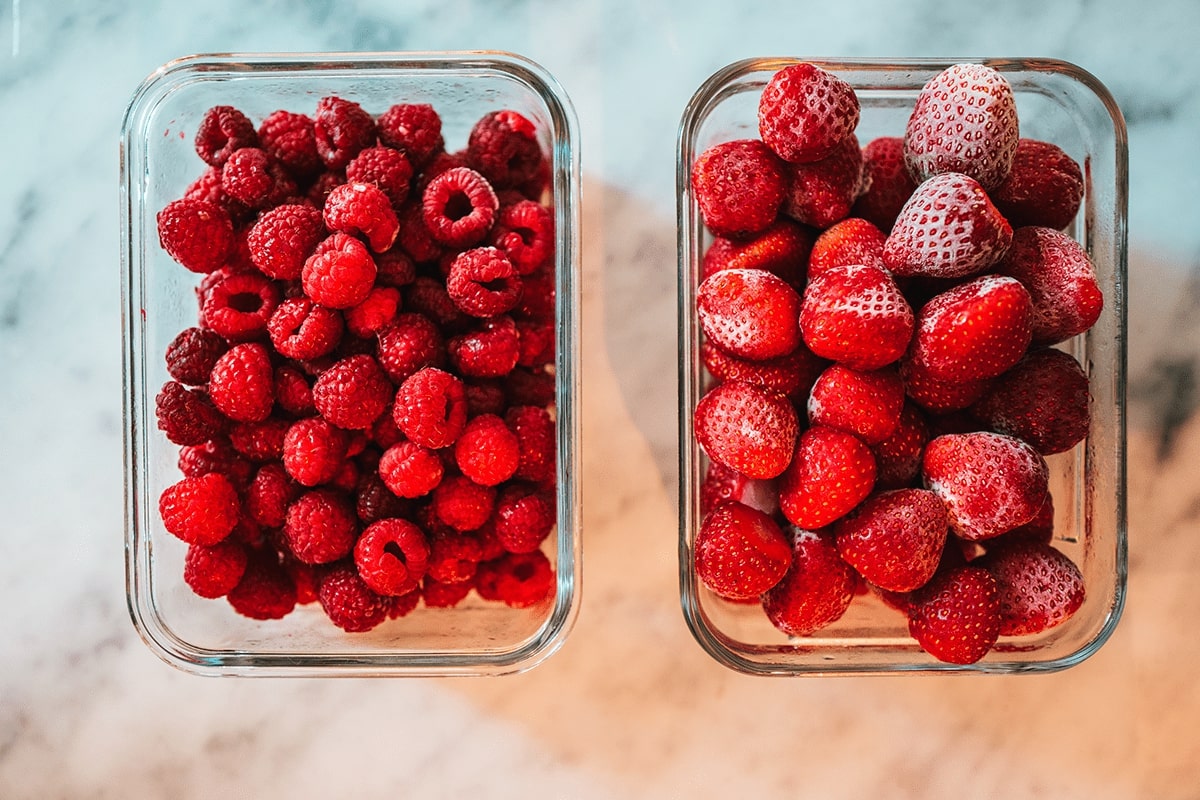
This project was conducted in partnership with the Ville de Montréal.
